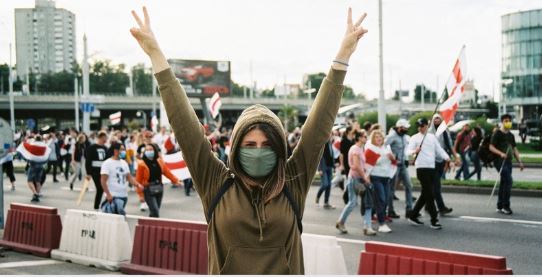A Nationwide Movement for Change
On May 1, 2025, the United States experienced an unprecedented wave of protests in a coordinated effort against the Trump administration. The “50501” movement, symbolizing 50 protests across all 50 states on May 1, united Americans in a massive call for change. The protests, marking International Workers’ Day, brought together a broad coalition of labor unions, immigrant rights advocates, civil rights activists, students, and everyday citizens, all mobilized to challenge the policies of the current administration.
Cities like New York, Los Angeles, Chicago, San Francisco, and Washington, D.C. saw throngs of demonstrators filling the streets. From urban centers to smaller towns and state capitals, protests erupted across the nation, creating a powerful display of unity and resistance. The movement transcended regional divides, proving that the frustrations and concerns voiced by activists were shared across the political spectrum, and were not confined to traditionally liberal strongholds.
Key Issues: Worker Rights, Immigration, and Public Services
At the heart of the protests were three primary issues: labor rights, immigration policies, and the protection of public services. Protesters voiced their opposition to the erosion of workers’ rights, particularly focusing on recent executive orders and legislative changes that weakened collective bargaining and diminished union power. The rollback of worker protections was seen as part of a broader pattern of diminishing support for the middle class, sparking anger across various sectors.
Immigration reform was another central issue, with demonstrators expressing outrage over harsh deportation practices, family separations, and the dismantling of protections like DACA. Immigrant communities, many of whom form the backbone of the nation’s labor force, took to the streets not only to defend their rights but also to underscore their invaluable contributions to American society. These actions reflected a deepening discontent with the treatment of immigrants and the broader xenophobic rhetoric that has characterized much of the administration’s policies.
Additionally, the protests addressed cuts to public services, including education, healthcare, and infrastructure. Teachers, healthcare workers, and public service employees took a stand against the government’s proposed budget cuts and reforms that threatened vital public services. Activists warned that these changes would disproportionately affect marginalized communities, exacerbating inequality and undermining critical institutions that millions rely on.
The Power of Solidarity Across America
What made the May Day protests so impactful was their sheer scale and diversity. The 50501 campaign was not just a national outcry; it was a testament to the strength of collective action across the entire country. From the icy conditions in Alaska, where protesters rallied against environmental deregulation, to Mississippi, where labor and racial justice were intertwined, the protests reflected the unique challenges faced by different regions but were united by a common cause.
Social media played a pivotal role in organizing the movement, allowing activists to spread their message and coordinate actions in real time. Hashtags such as #50501, #MayDayUprising, and #RightsForAll dominated Twitter and other platforms, amplifying the voices of protestors and keeping the momentum of the movement alive. Livestreams allowed people across the nation to witness the events unfolding, reinforcing a sense of solidarity and connection among participants.
Implications for Politics and Society
The May Day protests mark a significant moment in the ongoing political discourse in the United States. With the 2026 midterm elections on the horizon, political analysts suggest that this widespread mobilization may have a lasting impact on the public’s perception of the Trump administration and could influence the political landscape moving forward. The demonstrations reflect a growing discontent with current policies, as well as a shift toward more active engagement from grassroots movements.
The May Day Uprising serves as a reminder of the power of collective action and the resilience of those fighting for workers’ rights, immigration reform, and the preservation of public services. The massive turnout on May 1st demonstrated that Americans across the nation are ready to confront policies they view as harmful and unjust, setting the stage for further activism in the months ahead.



